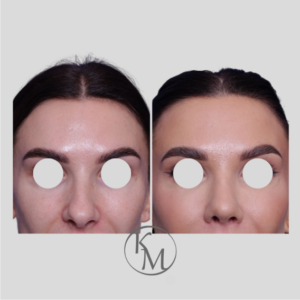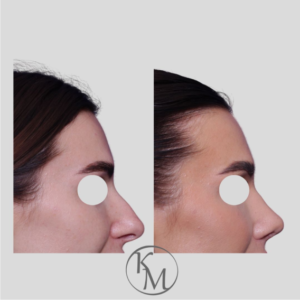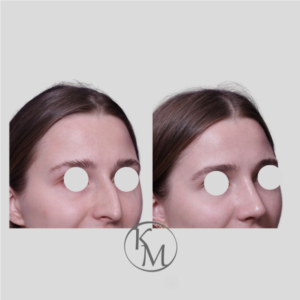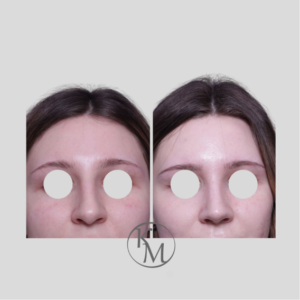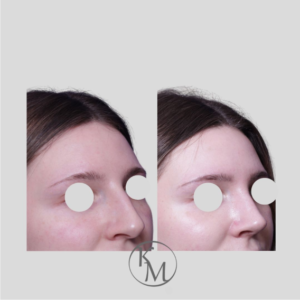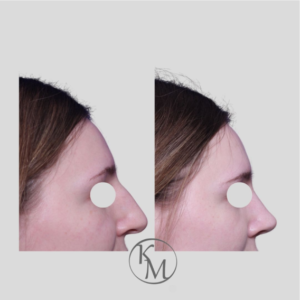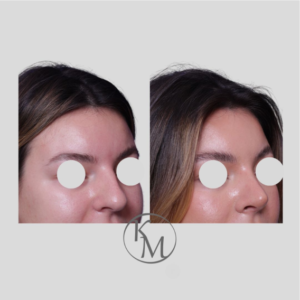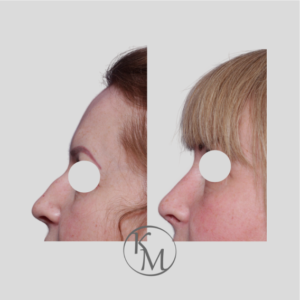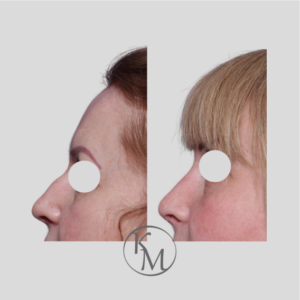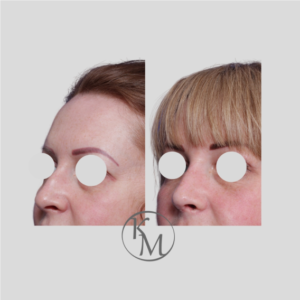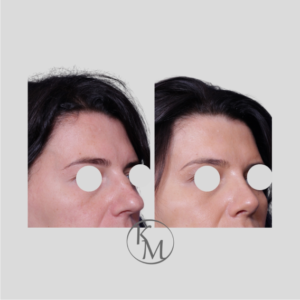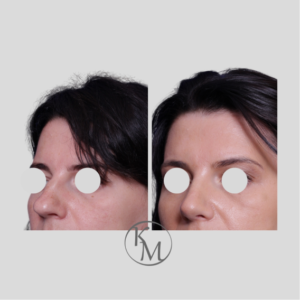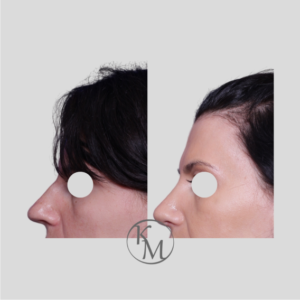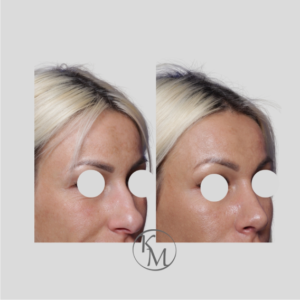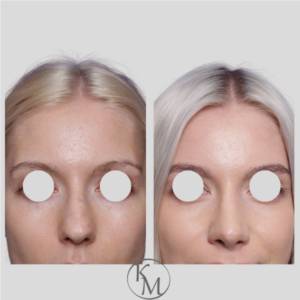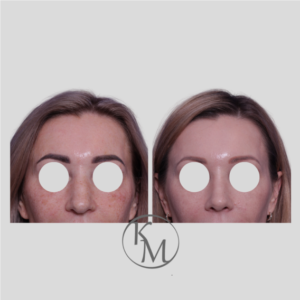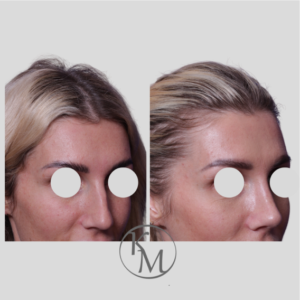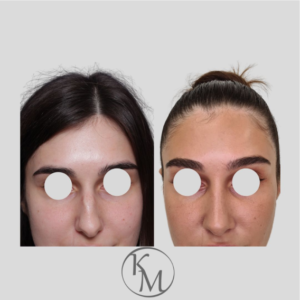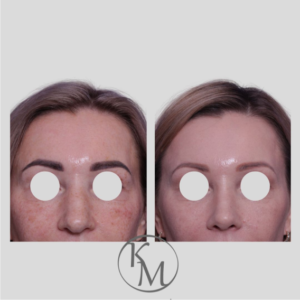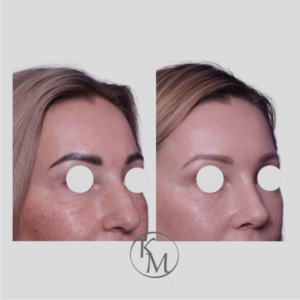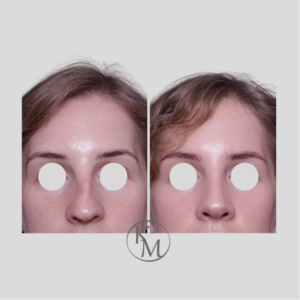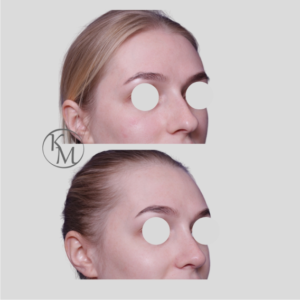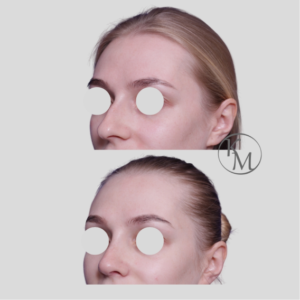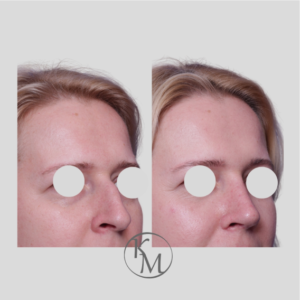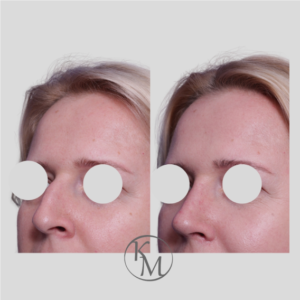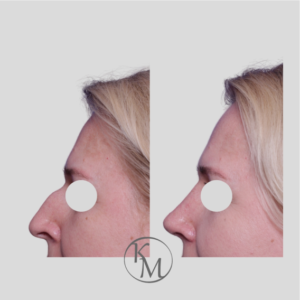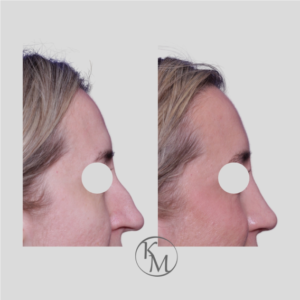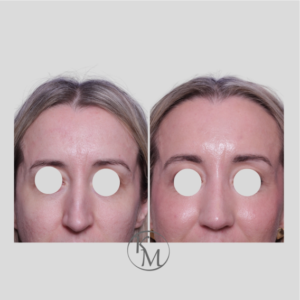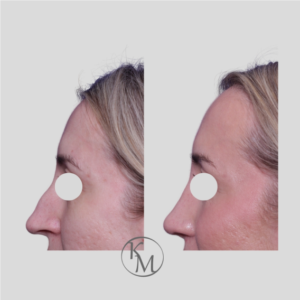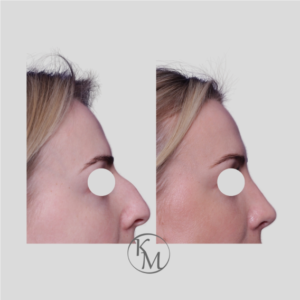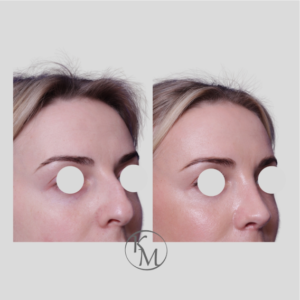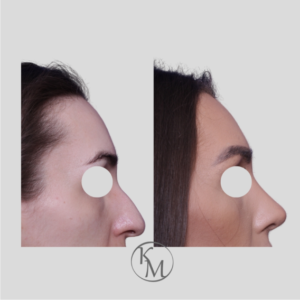Nose surgery
Nose surgery
Nose surgery (rhinoplasty), is a procedure aimed at enhancing the aesthetic appearance of the nose. This surgery not only beautifies the nose but also helps achieve better facial symmetry and proportions.
Rhinoplasty is performed by modifying the bone and/or cartilage of the nose: it can be used to correct the size and/or width of the nose, to reduce or eliminate the hump (nose bridge surgery), to change the shape of the nostrils, or to change the angle between the nose and upper lip. The nose tip surgery can also be performed when the tip is flattened, reduced, raised, etc.
Nose plastic surgery is often also relevant for respiratory problems. One of the most common problems is a deviation of the nasal septum, which directly affects respiratory function. In such cases, nasal septum surgery is performed. The surgery restores the axis of the septum, which significantly improves the quality of life by making it easier to breathe. Nose plastic surgery is also relevant after injuries when the nose is broken and does not heal properly.
Who might benefit from surgery?
Nose surgery (rhinoplasty) is only performed on people over 18 years of age. For children, rhinoplasty surgery is available if there are congenital deformities such as wolf’s palate or harelip.
Nose surgery (rhinoplasty), is a procedure aimed at enhancing the aesthetic appearance of the nose. This surgery not only beautifies the nose but also helps achieve better facial symmetry and proportions.
Rhinoplasty is performed by modifying the bone and/or cartilage of the nose: it can be used to correct the size and/or width of the nose, to reduce or eliminate the hump (nose bridge surgery), to change the shape of the nostrils, or to change the angle between the nose and upper lip. The nose tip surgery can also be performed when the tip is flattened, reduced, raised, etc.
Nose plastic surgery is often also relevant for respiratory problems. One of the most common problems is a deviation of the nasal septum, which directly affects respiratory function. In such cases, nasal septum surgery is performed. The surgery restores the axis of the septum, which significantly improves the quality of life by making it easier to breathe. Nose plastic surgery is also relevant after injuries when the nose is broken and does not heal properly.
Who might benefit from surgery?
Nose surgery (rhinoplasty) is only performed on people over 18 years of age. For children, rhinoplasty surgery is available if there are congenital deformities such as wolf’s palate or harelip.
The process of surgery
The operation is performed under general anaesthesia and takes about 2 hours.
Surgery is performed using the open method only: an open incision in the nasal sulcus between the nostrils and an extension inside the nostrils. The incision reshapes the nasal bone and cartilage and leaves a small scar in the mucous membrane after surgery. A piezo is used to correct the bone part of the nose.
When correcting the nostrils, scars may remain on the outer part of the nostrils.
Before surgery
Before the surgery, it is very important to discuss with your surgeon in detail what shape you want and what result is possible and realistic for you. A computer simulation is carried out before the surgery to see what kind of result can be expected after the surgery.
Post-surgery period
The post-surgery period after rhinoplasty requires patience and a positive attitude, as it is long and causes discomfort related to one of the most important functions – breathing. This is why it is very important to follow the surgeon’s recommendations.
Swelling can cause breathing difficulties and bruising under the eyes in the first week after surgery, so it is recommended that you return to work no sooner than 2 weeks later. You should also avoid extremely hot baths, showers, saunas, solariums and sunbathing for 2 months after rhinoplasty, as the heat can increase bleeding. Cold compresses are recommended.
Surgical risk
The surgical risks of rhinoplasty are mainly related to the impairment of various respiratory functions – breathing may be impaired and the sense of smell may be affected. Adverse reaction to anaesthesia, eye irritation, wound infection, bleeding, deformation of the nasal axis, stretching sensation, tissue death (necrosis) in a small area of the skin, deformity due to scarring may also occur. These risks are rare and can usually be avoided by following your doctor’s recommendations.
Results
The first changes are noticeable after just one month, but the final result is only visible after the nose has fully healed – after 1-1.5 years.
Frequently asked questions
Does nose surgery leave scars?
The surgery involves an external incision, which may leave a small, hardly visible scar in the nasolabial sulcus. In the case of nostril correction, scarring on the outer part of the nostrils is possible.
What is the difference between nasal septum surgery and rhinoplasty?
Nasal septum surgery is performed to correct a deviated nasal septum that can make breathing difficult. A rhinoplasty, on the other hand, is changing the appearance of the nose by correcting the size and shape of the nose. These surgeries can be performed together to achieve both functional and aesthetic changes.
Why are there age restrictions for nose surgery patients?
The nasal structure must be fully formed before the surgery. The nose of a patient under the age of 18 may still be growing and changing, thus the surgery performed earlier does not guarantee long-lasting results.
Can nose surgery be performed together with other facial surgeries?
Yes, nose surgery can be combined with other facial surgeries, such as a facelift, a chin lift or eyelid surgery (for more information on other facial surgeries, see “Facial plastic surgery“). If you are planning to have more than one surgery, please discuss this option with your surgeon during your consultation.














